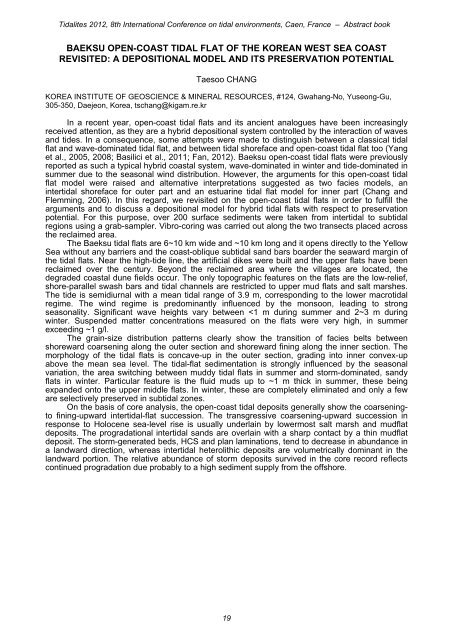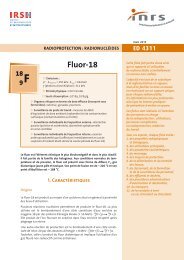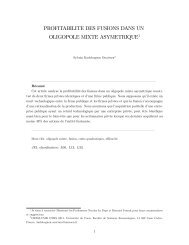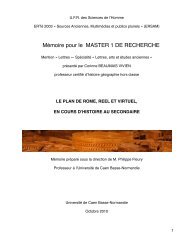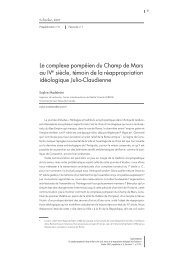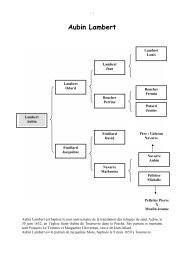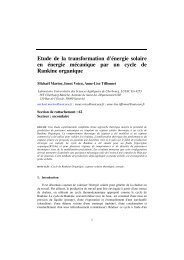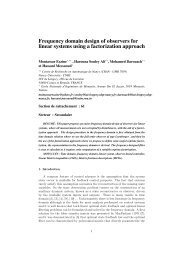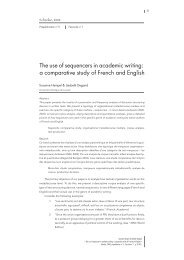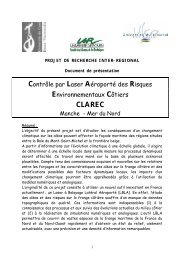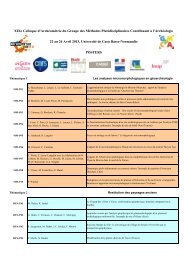programme tuesday, july, 31 - Université de Caen Basse Normandie
programme tuesday, july, 31 - Université de Caen Basse Normandie
programme tuesday, july, 31 - Université de Caen Basse Normandie
You also want an ePaper? Increase the reach of your titles
YUMPU automatically turns print PDFs into web optimized ePapers that Google loves.
Tidalites 2012, 8th International Conference on tidal environments, <strong>Caen</strong>, France – Abstract book<br />
BAEKSU OPEN-COAST TIDAL FLAT OF THE KOREAN WEST SEA COAST<br />
REVISITED: A DEPOSITIONAL MODEL AND ITS PRESERVATION POTENTIAL<br />
Taesoo CHANG<br />
KOREA INSTITUTE OF GEOSCIENCE & MINERAL RESOURCES, #124, Gwahang-No, Yuseong-Gu,<br />
305-350, Daejeon, Korea, tschang@kigam.re.kr<br />
In a recent year, open-coast tidal flats and its ancient analogues have been increasingly<br />
received attention, as they are a hybrid <strong>de</strong>positional system controlled by the interaction of waves<br />
and ti<strong>de</strong>s. In a consequence, some attempts were ma<strong>de</strong> to distinguish between a classical tidal<br />
flat and wave-dominated tidal flat, and between tidal shoreface and open-coast tidal flat too (Yang<br />
et al., 2005, 2008; Basilici et al., 2011; Fan, 2012). Baeksu open-coast tidal flats were previously<br />
reported as such a typical hybrid coastal system, wave-dominated in winter and ti<strong>de</strong>-dominated in<br />
summer due to the seasonal wind distribution. However, the arguments for this open-coast tidal<br />
flat mo<strong>de</strong>l were raised and alternative interpretations suggested as two facies mo<strong>de</strong>ls, an<br />
intertidal shoreface for outer part and an estuarine tidal flat mo<strong>de</strong>l for inner part (Chang and<br />
Flemming, 2006). In this regard, we revisited on the open-coast tidal flats in or<strong>de</strong>r to fulfill the<br />
arguments and to discuss a <strong>de</strong>positional mo<strong>de</strong>l for hybrid tidal flats with respect to preservation<br />
potential. For this purpose, over 200 surface sediments were taken from intertidal to subtidal<br />
regions using a grab-sampler. Vibro-coring was carried out along the two transects placed across<br />
the reclaimed area.<br />
The Baeksu tidal flats are 6~10 km wi<strong>de</strong> and ~10 km long and it opens directly to the Yellow<br />
Sea without any barriers and the coast-oblique subtidal sand bars boar<strong>de</strong>r the seaward margin of<br />
the tidal flats. Near the high-ti<strong>de</strong> line, the artificial dikes were built and the upper flats have been<br />
reclaimed over the century. Beyond the reclaimed area where the villages are located, the<br />
<strong>de</strong>gra<strong>de</strong>d coastal dune fields occur. The only topographic features on the flats are the low-relief,<br />
shore-parallel swash bars and tidal channels are restricted to upper mud flats and salt marshes.<br />
The ti<strong>de</strong> is semidiurnal with a mean tidal range of 3.9 m, corresponding to the lower macrotidal<br />
regime. The wind regime is predominantly influenced by the monsoon, leading to strong<br />
seasonality. Significant wave heights vary between


